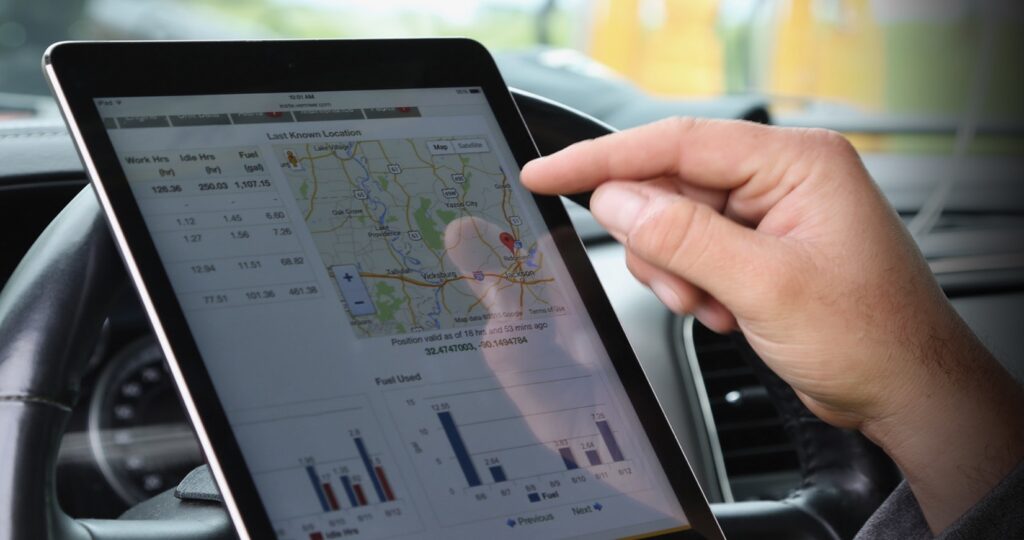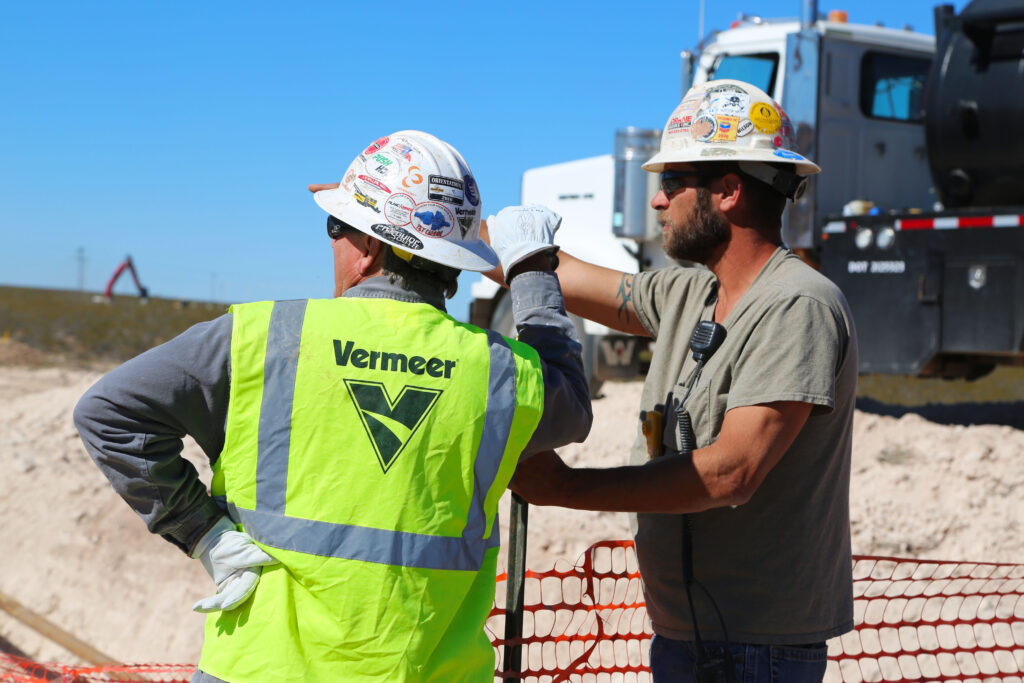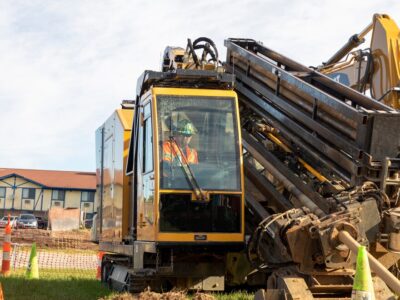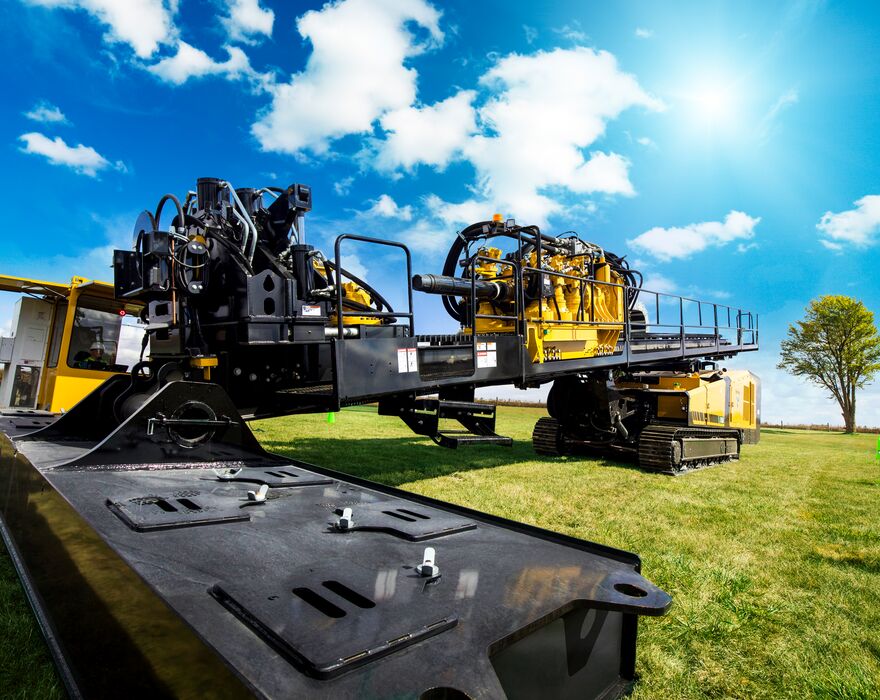“Congratulations! You won the horizontal directional drilling (HDD) portion of a major pipeline project for (insert project type: water, wastewater, oil, gas, carbon or hydrogen). When can your crew get started?”
These are the words every HDD contractor wants to hear after bidding on a job. However, they can also cause stress as you think about all the details that must be worked out before the first rod is spun up and pushed into the ground. To minimize this stress, the experts at Vermeer recommend the following advice for optimizing your HDD project:
- Understand the steps involved in the HDD project and who is responsible for each step.
- Ensure that all necessary equipment and resources are available.
- Optimize equipment hauling efficiency.
- Consider ground conditions and tooling.
- Plan for logistical issues and follow safety regulations.
Here is a deeper look at each of these areas, so you know what questions you should be asking and what steps are involved in planning an HDD project.
Determining who’s responsible for what on HDD projects
While the specific responsibilities and expectations of your crew should be outlined in the bid specification, it’s essential to clarify what your responsibilities are on a large-diameter HDD pipeline project. According to Kelly Beller, Vermeer Pipeline solutions specialist, “On big projects, there are usually several different contractors brought together to perform specific parts of the job. The expectations of the HDD contractor can vary greatly depending on the type of project and the general contractor.”
For oil and gas pipeline work, the general contractor often handles everything from digging entry and exit pits to laying down cribbing for the maxi rig. However, for water and wastewater HDD projects, the municipality often acts as the general contractor, and the HDD crew is responsible for all the details, including fusing or welding pipes together. “Project supervisors should create a list of every project detail and note who is responsible for each step. If it’s your team’s responsibility, great! If not, assign a contact person for that task and provide their contact information. This will ensure your team knows who to contact if any issues arise,” advised Beller.
Preparing equipment for the HDD project
Next, it’s time to create a list of all the equipment needed for the project. Vermeer Application Specialist Marvin Klein stated, “It’s important for contractors to complete this step as soon as possible after winning an HDD project. Likely, some of the equipment required for a new project is already in use on another job. Therefore, the contractor needs to ensure that the project’s timing allows for the equipment to be transferred to the next job before it starts. Otherwise, they may need to invest in or rent another machine, which could take some time to secure.”
Planning and scheduling equipment ahead of your next project can help your team be more proactive with machine maintenance.
“Contractors that do a wide range of work may have machines that sit idle between jobs, so it’s important to inspect them thoroughly and make sure they’re ready to go,” said Klein. “Similarly, maxi rigs, pumps, reclaimers and other equipment coming from another project may need preventive maintenance performed. Taking care of these needs before starting can help everything run smoothly on an HDD project.”
Transporting machinery to an HDD project
Hauling a maxi rig, drill pipe, pumps, generators, mud recycling system, tooling and excavators to an HDD project site can pose a logistical challenge and negatively impact project margins if not done efficiently.
“Load planning can help minimize the number of semi-loads,” advised Beller. “But having a list of all equipment and accessories required onsite is also useful to avoid any unexpected extra trips. If a contractor anticipates needing several different reamer options, it’s better to transport them with a trailer full of other materials than to make additional trips during the boring process, which can add up.”
Planning for ground conditions
The bid specifications on many major utility projects include ground material information. But often, what’s provided in geotechnical reports may not represent everything you encounter during a bore. This is why it’s critical to do as much upfront research as possible about the conditions your crew may face for your HDD project.
“If a contractor isn’t familiar with a project’s specific drilling conditions, another contractor on the project may be a good source for information, as well as the local Vermeer dealer,” said Andy Bremner, Vermeer Pipeline sales manager. “Vermeer dealers work with HDD crews worldwide and are always happy to help contractors when they have questions about local drilling conditions.”
According to Beller, contractors should always consider what type of tooling and drilling fluid adjustments may have to be made if they encounter unexpected ground conditions. “If a project was initially planned as a dirt bore, but rock is encountered at deeper depths, crews must adjust the plan. This may require different equipment and tooling that’s not onsite. By planning ahead, a contractor can minimize the impact unexpected ground conditions will have on productivity.”

Planning logistics for HDD projects
On large-diameter bores, your crew’s productivity can be affected by other companies working on the job. For example, if you’re installing an oil pipeline, your progress could be delayed by the team of people welding pipe sections together. This can create logistical challenges and potentially result in idle time for your crew.
Klein and Beller stressed that proactive communication is essential to help everything go smoothly.
“During the pilot bore, HDD crews can usually operate independently,” said Beller. “However, as the bore is reamed and gets closer to pullback, everyone must be working from the same timeline since having a bore path sit empty is not ideal for most jobs. Contractors need to make sure that the team responsible for the pipe is ready to go when the HDD crew is ready to start pulling back.”
Klein added that it’s important for the HDD crew to know when mid-welds are required during the pullback process. “Welding or fusing additional pipe can take several hours, impacting how long the pullback process will take. Developing a game plan ahead of pulling back will help keep everyone on the project fresh and ready to work.”

Planning for success in HDD projects
Winning an HDD large-diameter project requires a lot of preparation, planning and resources. By understanding the project steps, having the necessary equipment and resources available, optimizing equipment hauling efficiency, considering ground conditions and planning for logistical issues, you can increase your probability for success on HDD projects large and small.
Contact your local Vermeer dealer if you have questions or need help planning your next HDD project.
Vermeer Corporation reserves the right to make changes in product engineering, design and specifications; add improvements; or discontinue manufacturing or distribution at any time without notice or obligation. Equipment shown is for illustrative purposes only and may display optional accessories or components specific to their global region. Please contact your local Vermeer dealer for more information on machine specifications.
Vermeer and the Vermeer logo are trademarks of Vermeer Manufacturing Company in the U.S. and/or other countries. © 2023 Vermeer Corporation. All Rights Reserved.

